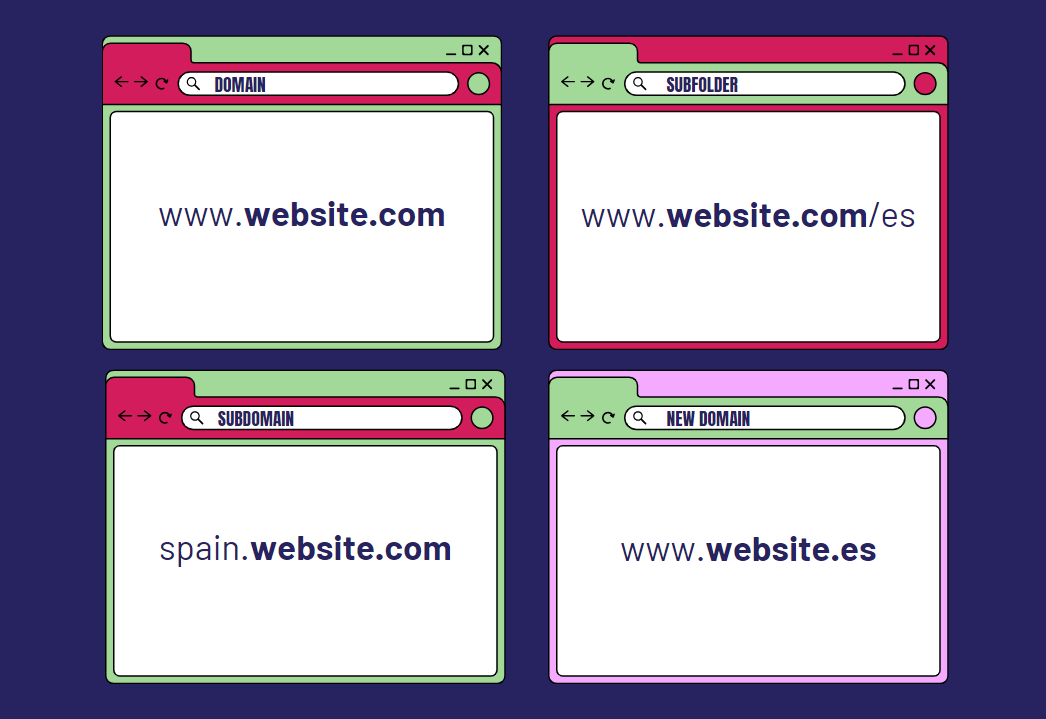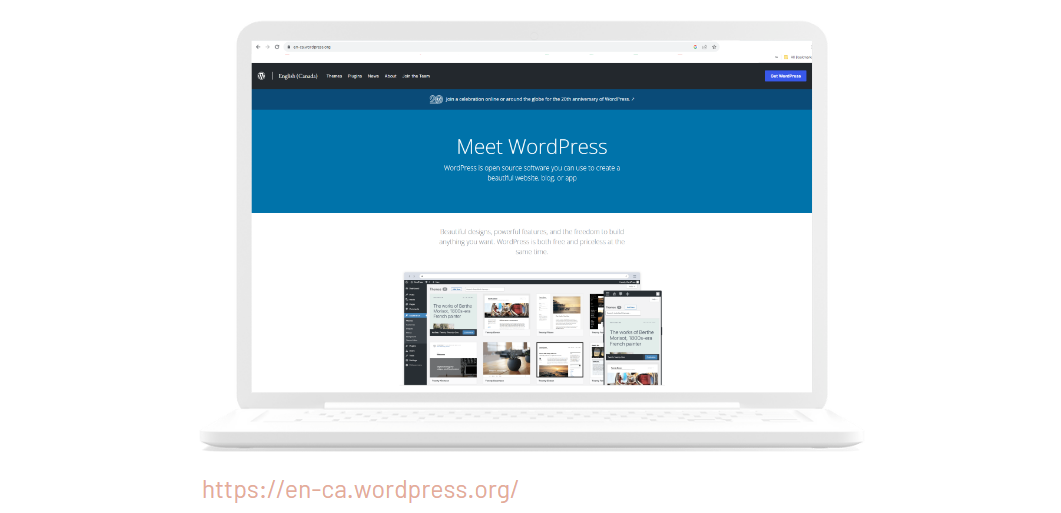Whether you are a franchisor or a chain expanding into new locations and asking the question “how do I effectively scale my website strategy?” this short guide is for you.
In this article, we’ll explore three popular approaches to adding new locations to your website domain strategy: subfolders, subdomains, and new domains.
We’ll show you the examples, pros and cons, and typical scenarios that call for each. If you have any questions or need help creating a custom website strategy, contact us for a free proposal.
Table of Contents
3 Ways to Add New Locations to Your Website Domain Strategy
If you are planning to expand your online presence to different countries or regions, there are several ways you can go about it domain-wise, each with its own set of advantages and challenges.
In this article, we’ll show you the three most popular international website set-ups:
- Subfolders
- Subdomains
- New domains

All of these approaches allow you to create content in the local languages and tailor it to the local market needs, with varying degrees of user experience variations.
The key differences are in:
- Website content creation and website management resources
- Website marketing resources
- Regional webmaster autonomy
Let’s explore each approach in more detail:
1. Subfolders
Subfolders are a widely adopted strategy for scaling a website’s reach. They involve creating directories within your main website to host content tailored to specific countries or regions.
Subfolders are an excellent choice when:
- You want to maintain a single domain for your global brand.
- Consistency in branding and design across all locations is crucial.
- You wish to benefit from shared resources like templates and stylesheets.
We see this approach commonly used among chains that want to centralize brand asset management, as well as franchises that are looking to optimize their marketing efforts, particularly SEO.
Brands that Use Subfolders
Many global brands successfully implement subfolders to cater to diverse markets. For example:
- Nike
- Apple
- Samsung

Pros of Using Subfolders
- Organized Content: Subfolders keep content neatly organized, making it easy for both users and administrators.
- Centralized Content Management: Subfolders allow you to manage all website experiences under one roof, giving you more control over brand presentation as well as performance data.
- SEO Benefits: Subfolders can enhance your website’s SEO by targeting keywords specific to each location.
- Efficient Resource Sharing: Common assets can be shared across subfolders, reducing redundancy.
Cons of Using Subfolders
- Potential Complexity: Managing multiple subfolders can become complex as your website scales.
- Limited Flexibility: Subfolders may not be suitable if you need to drastically differentiate content and branding across locations.
- Vulnerability: If a subfolder’s security is compromised, all subfolders are vulnerable to the attack.
2. Subdomains
Subdomains involve creating a separate web address (e.g., uk.example.com) for each location. They are a viable option when:
- You want distinct branding or design for each location.
- You need more flexibility to implement different technologies or CMS for specific markets.
- You aim to target local SEO effectively.
What’s the difference between subfolders and subdomains, apart from the URL structure? – you may ask.
- Content in a subfolder is usually related to the main website and shares the same domain name. It’s a way to organize content hierarchically.
- Subdomains are often used for entirely different purposes or to host separate websites or applications under the same domain name. For example, a blog might be hosted on “blog.example.com,” separate from the main website.
Subfolders are used for organizing related content within the main website, while subdomains are employed when different sections or functionalities require a separate web presence or distinct branding.
We don’t see many brands using this approach when branching out into new territories – certainly not as many as those that opt for subfolders or new domains. Still, it is an option and, depending on your unique requirements, it might be the right one for you.
Brands that Use Subdomains
Notable brands like “ca.wordpress.com” use subdomains to tailor their digital experiences to regional audiences.

Pros of Using Subdomains
- Clear Distinction: Subdomains clearly separate content for different locations, enhancing user experience.
- Design Flexibility: You have more design and branding freedom for each subdomain.
- Targeted SEO: Subdomains can be optimized individually for local SEO.
Cons of Using Subdomains
- Administrative Overhead: Managing multiple subdomains can be more complex and time-consuming.
- SEO Dilution: SEO efforts may require additional attention to avoid dilution of domain authority.
- Performance Variability: Performance metrics can vary between subdomains, making it harder to assess the overall performance of the website.
You May Also Like: Complete Guide to Franchise SEO
3. New Domain
Creating entirely new domains for each location is a more radical approach. It’s suitable when:
- You want to establish a completely independent online presence for each market.
- Legal or regulatory requirements necessitate separate domains.
- Your brand offerings significantly vary across regions.
In our experience, new domains are a popular choice among franchises and chains that want to decentralize their operations and website management, including content and marketing.
Brands that Create New Domains
New domains are popular among franchise businesses, especially those that require greater regional autonomy like fast-food and retail brands.
Amazon, Burger King, and McDonald’s are just some of the global brands that create country-specific domains.

Pros of Creating New Domains
- Complete Independence: New domains offer complete autonomy for each location.
- Compliance: Easier compliance with local regulations and legal requirements.
- Tailored Branding: You can craft distinct branding and messaging for each domain.
Cons of Creating New Domains
- Resource Intensive: Registering and maintaining multiple domains can be costlier and more resource-intensive.
- SEO Challenges: New domains may initially struggle to gain SEO traction.
Key Takeaways
As with any strategic decision, choosing the right approach for your international website domain strategy—subfolders, subdomains, or new domains—depends on your specific goals and resources.
Consider your brand’s needs, the level of autonomy required, and the complexity you’re willing to manage
Asking questions like these can help you identify the optimal solution:
- Do our international teams require complete autonomy in website management?
- What resources will we be able to commit to website management and marketing?
- How important is SEO for my regional growth?
With a well-thought-out strategy, you can successfully expand your online presence to new territories and capture a broader audience while maintaining a consistent brand identity.
Questions about international website domain strategies? Consult with our experts.








